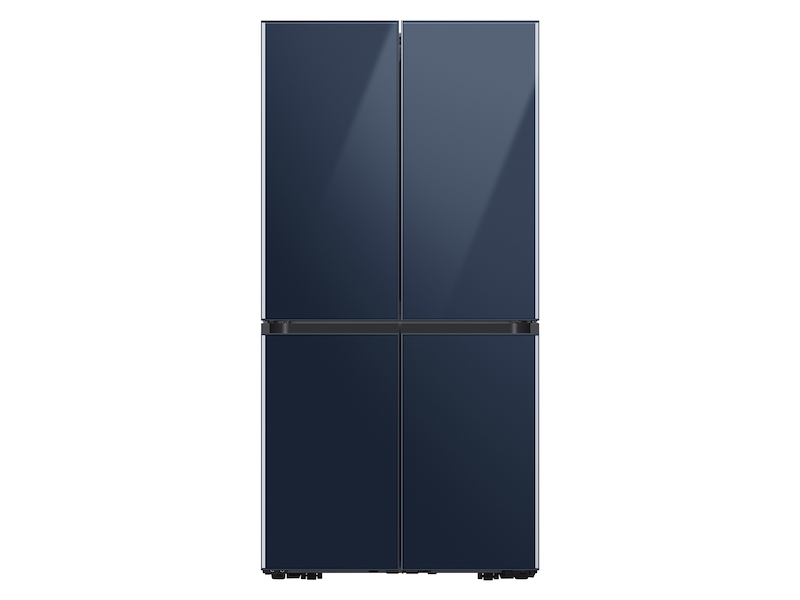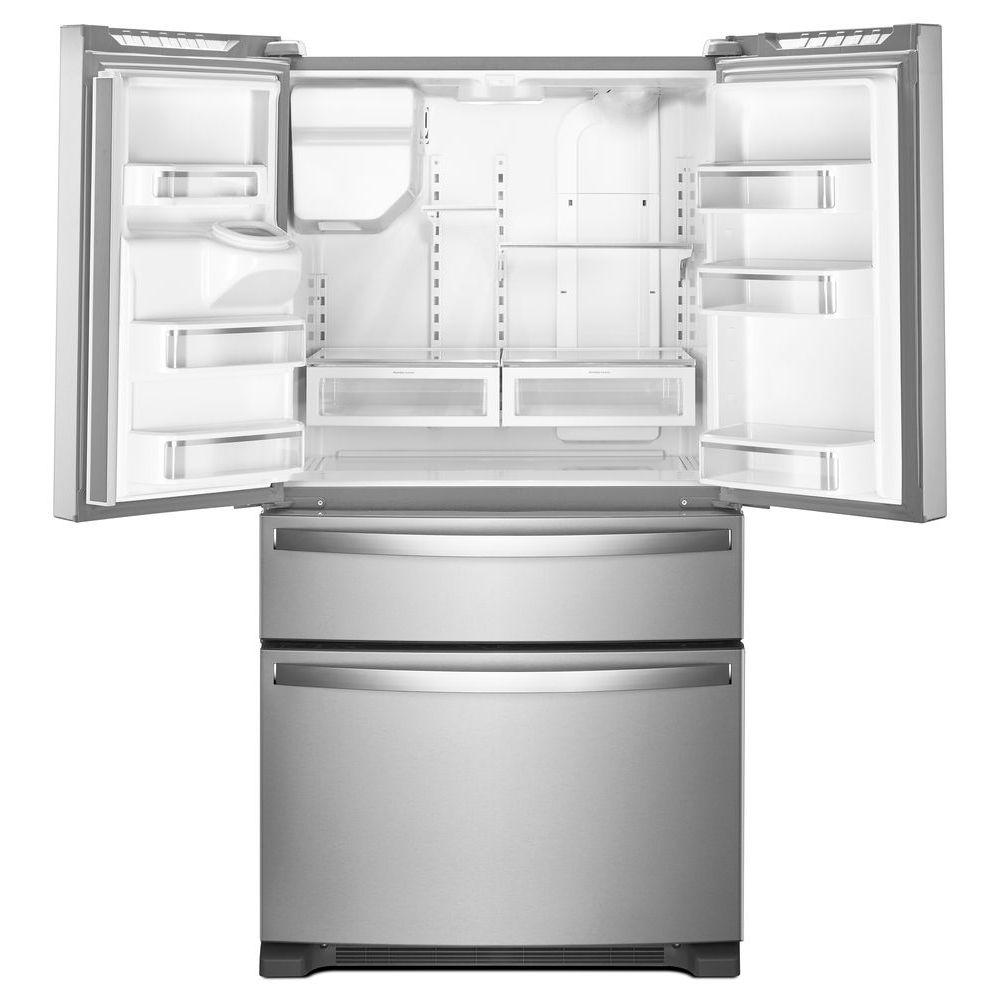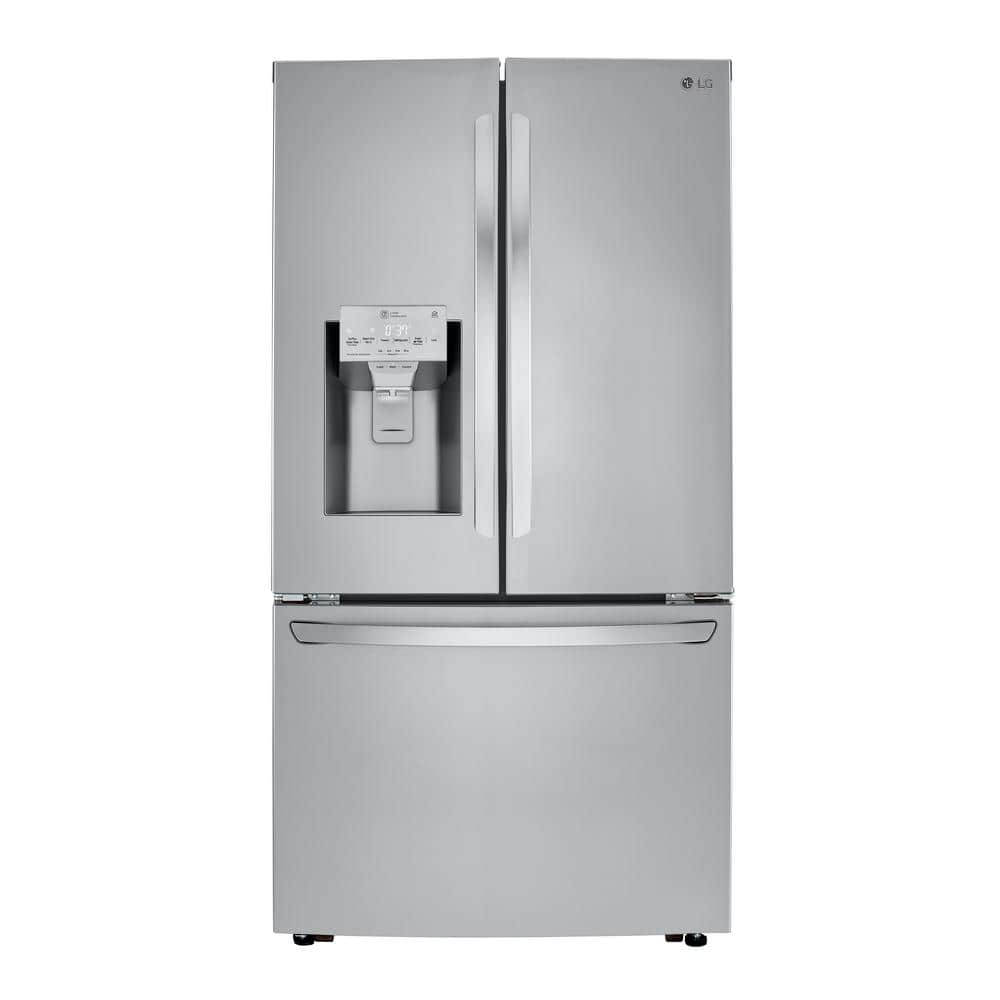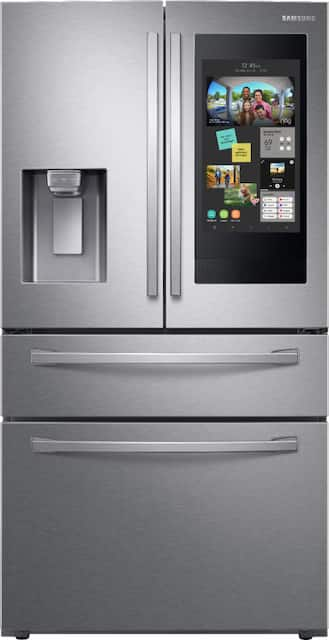Samsung 29 cu. ft. Smart BESPOKE 4-Door Flex™ Refrigerator with Customizable Panel Colors in Navy Glass
Extra-large capacity Smart 4-Door Flex™ refrigerator with customizable door panels available in multiple colors and finishes. It features the Beverage Center with both a water dispenser and AutoFill Water Pitcher, plus a Dual Ice Maker with nugget-style Ice Bites.
Customizable door colors
Customize the design of your refrigerator with changeable door panels. Choose from eight colors and two finishes to create a space that fits your style, the options are endless.
Press or pour – water two ways
Beverage Center provides quick access to refreshingly cool, filtered water two ways. Choose from an internal dispenser or a built-in pitcher that automatically refills, with the option to infuse with a flavor.
Ice your way
Enjoy your favorite beverage with your choice of ice. Select from cubed ice or new nugget-style Ice Bites that chill your drink faster.
Convert from fridge to freezer
Customize your lower-right storage space to be a refrigerator or freezer. With five adjustable settings, you choose what foods to store from fruits and vegetables to your favorite ice cream.
Superior organizational storage
With 29 cu. ft. of capacity, this spacious refrigerator is designed for convenience, offering unmatched flexibility and organization to store and access all your favorite foods with ease.
Seamlessly designed for a modern look
A modern look featuring a minimalist exterior with a signature flat door design and recessed handles that blend seamlessly into your kitchen.
Additional information
| Total Capacity | 28.6 cu. ft. |
|---|---|
| Refrigerator Capacity | 17 cu. ft |
| Freezer Capacity | 11.6 cu. ft. |
| Product Dimensions with Hinges, Handles and Door | 35 7/8" (L) x 73" (H) x 34 1/4 " (D) |
| Product Dimensions without Hinges and Door | 35 7/8" (L) x 70 3/4"(H) x 34 1/4 " (D) |
| Shipping Dimensions | 38 1/4" (L) x 77 5/8" (H) x 36 1/4" (D) |
| Product Weight | 361.6 lbs |
| Shipping Weight | 383.6 lbs |
| Warranty | – One (1) Year Parts and Labor on Refrigerator – 5-year Parts and Labor on sealed Refrigeration system only* – Five (5) years Parts and Labor on sealed Refrigeration system only* |






by Mandy
It has a very sleek look and so much space inside, opted for counter depth 23 cu ft but it has most space than our old full depth 26 cuft. So far no issue except the dent and bit of scratches that were there at the time of delivery but Samsung is taking care of it. Taking of 1 star because the panels aren’t finger print proof and need frequent cleaning.
by Ima
I bought this 2 months ago and couldn’t wait for it to arrive. I love the auto water fill and ice cube scoop. However, when we the refrigerator was delivered and installed we noticed the right door did not close properly. So, I called Samsung the same day and parts were ordered and scheduled a service repair within the next week. The part was replaced and I love lots of bins and shelves. The only problem is that I only have a small area to put tall stuff on by moving 1/2 of the shelf back. Digital control was easy to use.
by Awilson
The auto fill pitcher is fantastic. The space is done so well inside. We love our new fridge!
by Bite
We have been using the Bespoke about a month. We bought this for the ice. Lol! I’m happy to report that both ice makers work great, and the beverage station, which I didn’t think we would use is AWESOME! The fridge is laid out beautifully with pull out freezer trays that make the bottom freezer much more convenient. And it just looks great in the kitchen- so sleek and great lighting inside. I would recommend!!
by Yankeeh
I bought this a few weeks ago off a add for a huge discount of Samsung’s website. Just a year ago I purchased Samsung RF23M8070SR/AA 23 cu. ft. Counter-Depth 4-Door French Door Refrigerator – Stainless Steel Happy but not 100% Satisfied with my purchase. There ice maker kept over freezing the ice cubes in the maker so it would backup and then stop making ice. Pain to chisel the cubes out. Seen the offer for the BESPOKE 4-Door Flex glass doors with icemaker in the freezer with 2 ice options. The hidden water dispenser & water refilter was prefect keeps unwanted small kids from spilling water allover & having fresh water 100% of the time. Love the 4 door! The pull out drawers was great but was not utilized in the way it stored our food. The pull out freezer was good but things got lost & hard to keep organized. The 4 door Besoke gave us the option for 2 freezer or just one. Light weight and taller then our last fridge. Love it! I’m just not sure how the Wi-Fi works & why it has it. I’ll have to follow up on it soon.
by Scott
I have owned the Bespoke 4-door Flex for about a month now. Love the features, especially the auto fill water jug and dual ice options, which the Bespoke does a great job of keeping up with the heavy ice use my family puts it through. Hiding the icemaker behind the door is a great idea, my old fridge with the ice and water in the door always lead to water spots, smudges and hard water stains on the door surface and drip tray, which I was always cleaning. Another bonus with the built in pitcher is I always have filtered water in the morning when I make my coffee.
It was an easy connection to my Wi-fi and I like being able to control the functions from my phone. Counter depth fits perfectly in the kitchen and I was glad to reclaim a little floor space from my older, bulkier French door refrigerator.
by Larry
This is my second Samsung refrigerator and I cannot believe how great this new model is! Great appliance from the start and looks great in my home! Love the refrigerator!!